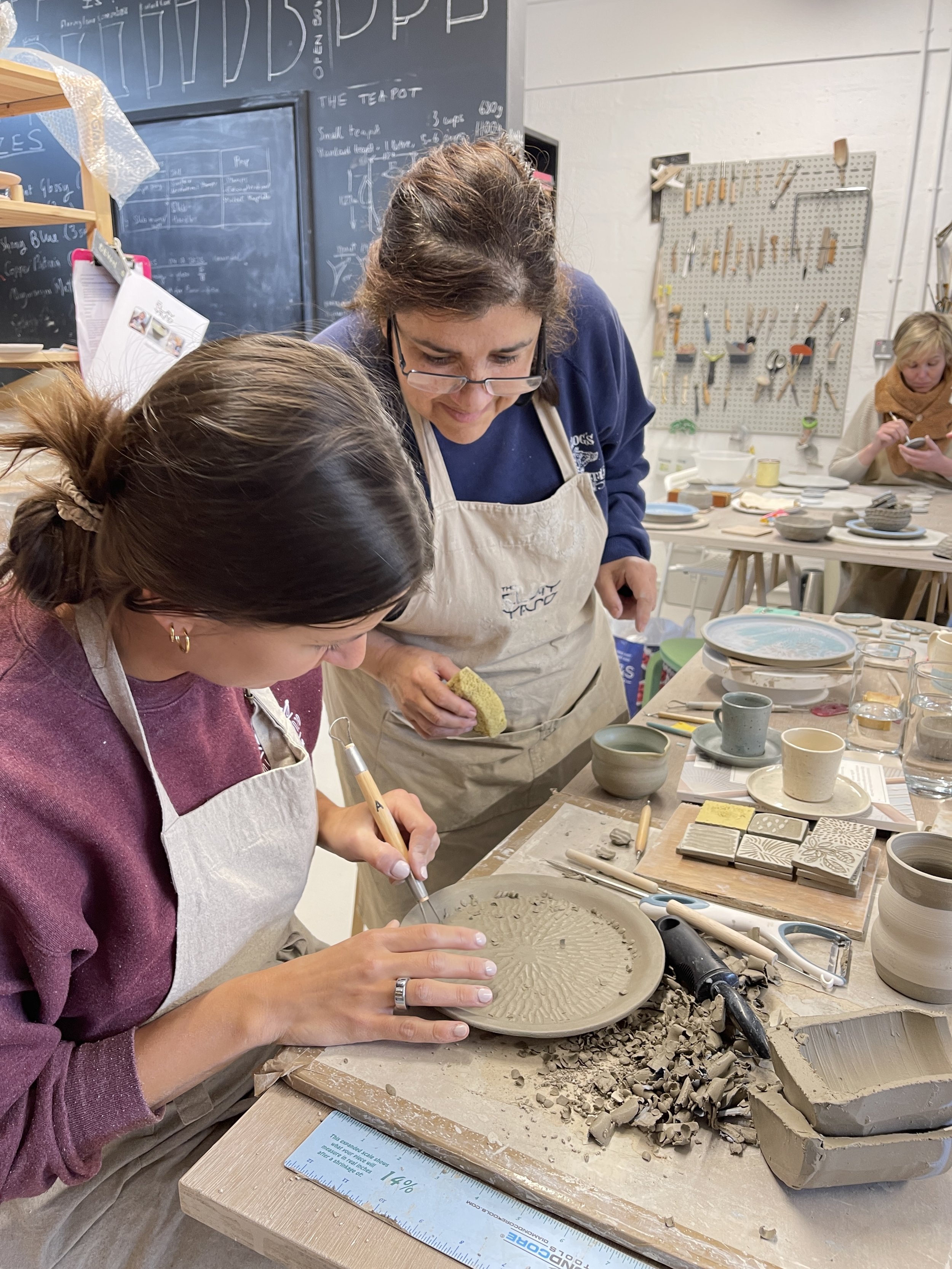The Work of our Hands
Take a moment to look closely at your hands. Explore the muscles, consider your response to touch, look at the wear-and-tear and evidence of your life-story ingrained on the skin and in the lines on your palms. Consider how your hands have worked for you in your life and nod to them in gratitude and respect.
The hands of visiting potter Hilda Carr fluting a thrown form.
I work with clay, making pots with my hands and teaching others to also use their hands to build and shape clay forms. At my little pottery school in Totnes, I aim to provide my students with an opportunity to make a space in their lives to slow down, to have an ‘interlude’ in their week and to take time-out from the clutter and buzz of life.
Pinch pots
The potter has a smorgasbord of ‘making’ skills to choose from and may dip into a number of different techniques often choosing to focus on either hand-building or throwing on the potter’s wheel; some may even combine the two. What is interesting to observe as a teacher is how the method employed produces not only a very different style of pot but also engages a very different set of emotional responses in the potters themselves.
Building and shaping with slabs of clay, rolling coils and pinching the clay into shape is known as ‘hand-building’ and is considered by many to be a beautifully calming and soothing activity. Pinching the clay with rhythm and repetition induces a serene sense of calm in the potter; they often make reference to a release of tension. In finding an opportunity to work with their hands they find a welcome break from the challenges of their day.
“
My Tuesday pottery class is so important for me. I forget I’m in pain for a couple of hours. It’s almost like medication
”
On the other hand a lump of clay, thrown on the potter’s wheel has a heightened sense of drama and the anticipation of what lies ahead can be both intense and exciting. You may recall the BBC Interlude broadcast that featured the hands of master-potter, Michael Casson shaping clay into a beautiful pot with the aim of distracting you from a gap in the television schedule. Although before my time, his videos are published on the web and I regularly use them in my classes to share his methods.
Calming and hypnotic throwing on the wheel calms the mind but perhaps more to the observer than the potter. The potter who can harness the spinning force to shape clay into cylinders, bowls or plates is to be admired and respected. A craft that requires dedication and practice, the graceful flow of the hands as they centre, open out and pull up clay is like “hand-ballet” and is mesmerising to watch.
Potters demonstrate commitment, a dedication to improvement and a desire to achieve. For them, the classes are about working with their hands, gaining value in repetition and practice, and learning through experience - valuable lessons in life for all of us.
Visitors to the studio enjoy an opportunity to take the pedal off the metal, slowing down and allowing themselves an “interlude” in their busy lives.




